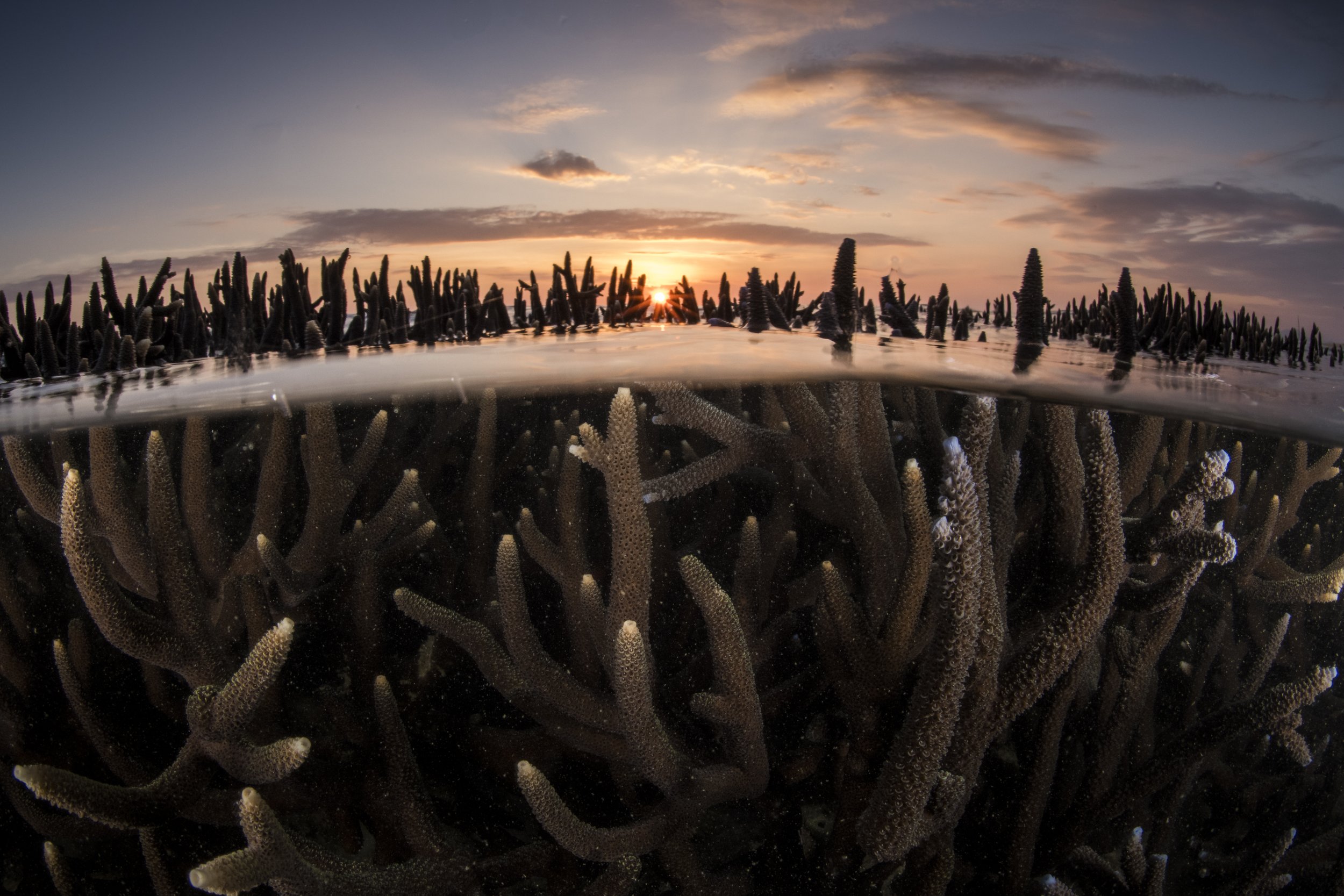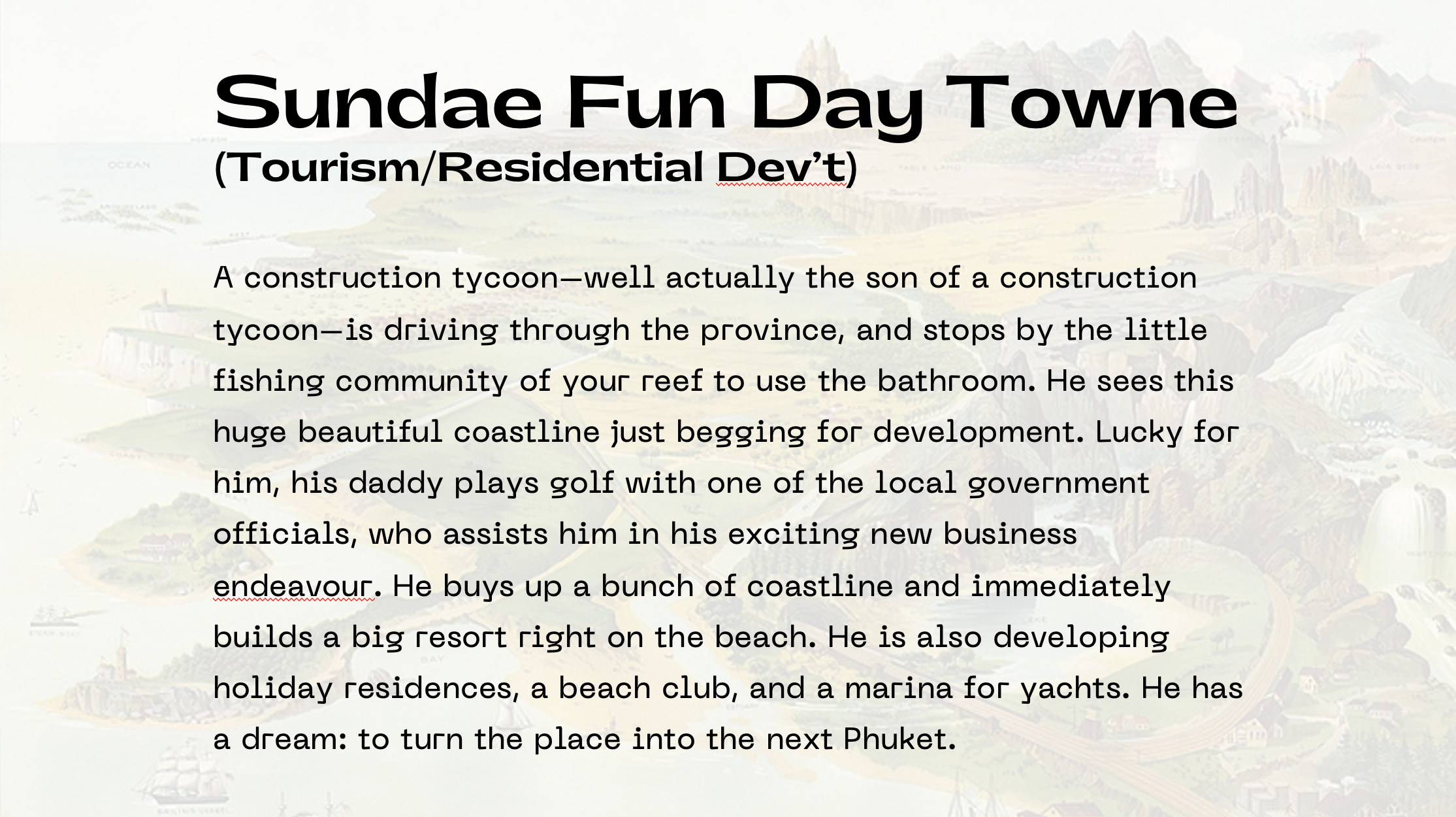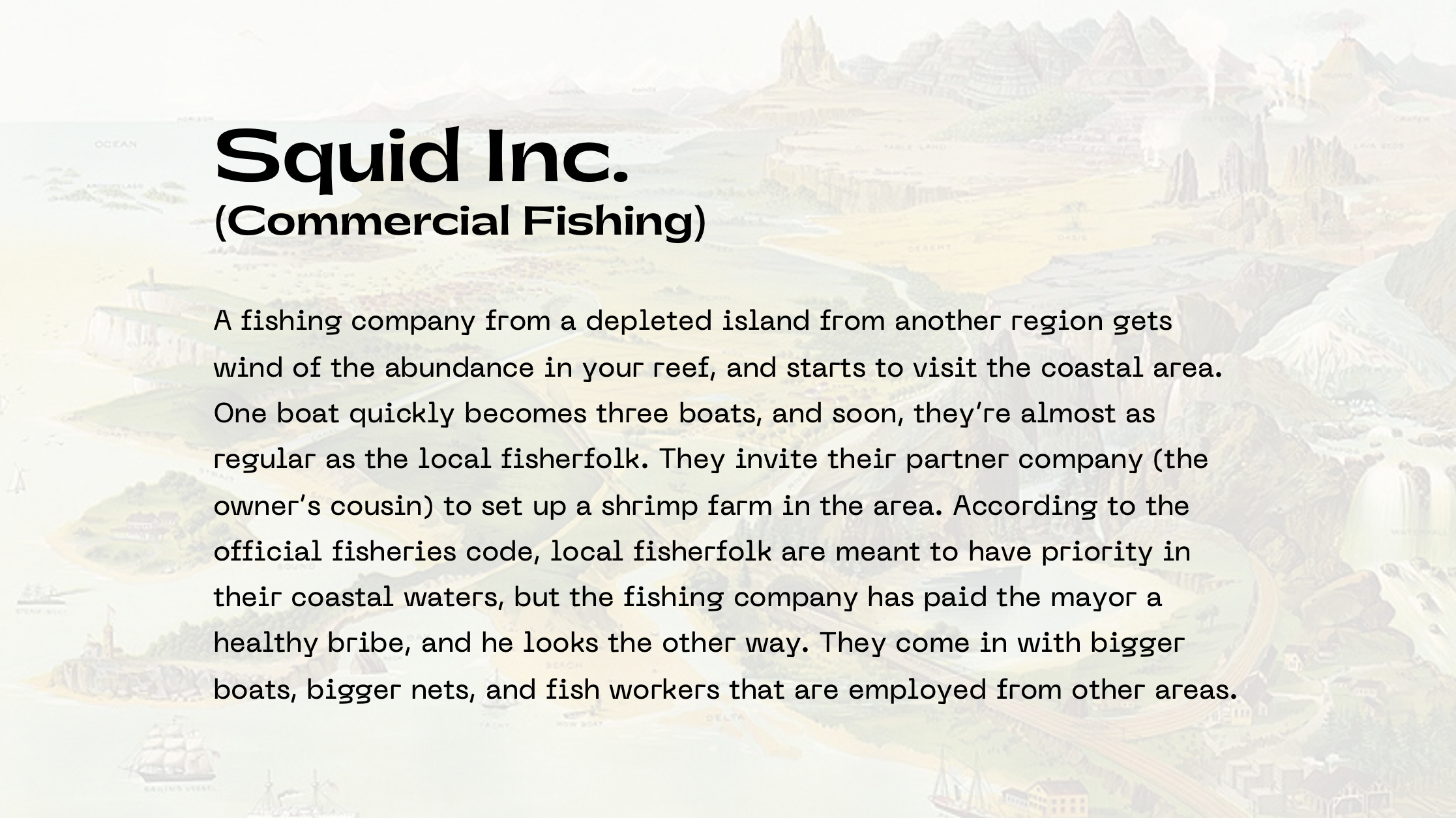Once Upon a Coastline, the workshop we staged with Thai college students at the Sustainability Expo in Bangkok last October 2022, began as an endless conversation with people we’d never met before: the artist Jonathan Jay Lee (Jon), known for rendering the everyday dynamism of his bustling island city of Hong Kong, and Thai conservation photographer and Nat Geo explorer Sirachai Arunrugstichai (Shin), who has spent the last two years documenting the relationship between traditional fisherfolk and the ecosystems of the Andaman Sea of Thailand.
Shin told us he wanted to highlight the importance of the marine protected area (MPA) the fisherfolk had established. But people can’t appreciate the value of protecting a coastal ecosystem without understanding it, first. Shin walked us through its living layers, and we realised it’s kinda like a city, with its evolving balance of competition and synergy.
Jonathan Jay Lee used iPad Procreate to design an “Ocean Sims City”, so our students could create and name their own ecosystem from the (sea) bottom up, with guidance from Shin, fellow Thai Nat Geo explorer Watcharapong Hongjamrassilp (Win) and us: Suwanbetopia, Pepperoni Pizza Island, and Koh Kra Bane. And then we asked them to destroy them, according to 3 narrative prompts written by our co-founder and Nat Geo explorer Nicola Sebastian: tourism operator Sundae Funday Towne; commercial fishing company Squid, Inc; and real estate developer MEGA Build Worldwide. Students turned their turquoise oceans muddy and bloody, their thriving corals into lifeless rocks, and reshaped their coastline with concrete structures.
But the story (workshop) wasn’t finished yet: the same speculative powers our students used to create and destroy their pristine coastline would also help them save it. It was amazing to see them intuitively arrive at proven measures for recovery like mangrove reforestation, zoning regulations, and buyback schemes. When each group presented the story of their coastline, they explained their human and nonhuman citizens as if they knew them intimately.
The entire process seemed daunting at first, for we knew less about Thai waters than we did our own, but that’s the beauty of collaborating around ecology: all of us, not just the students, learned something about trusting the creative process. We sometimes forget that there is simplicity in imagination, a generosity in co-creation, and power in taking the iPad into our hands to draw our own futures. Although everyone in the workshop knew there was no going back to a pristine world—we had found that there was still space for possibility, and therefore, hope. We’re looking forward to imagining future iterations of these island workshops with Jon, Shin, Win, and you!
Photos courtesy of Sirachai Arunrugstichai.

















